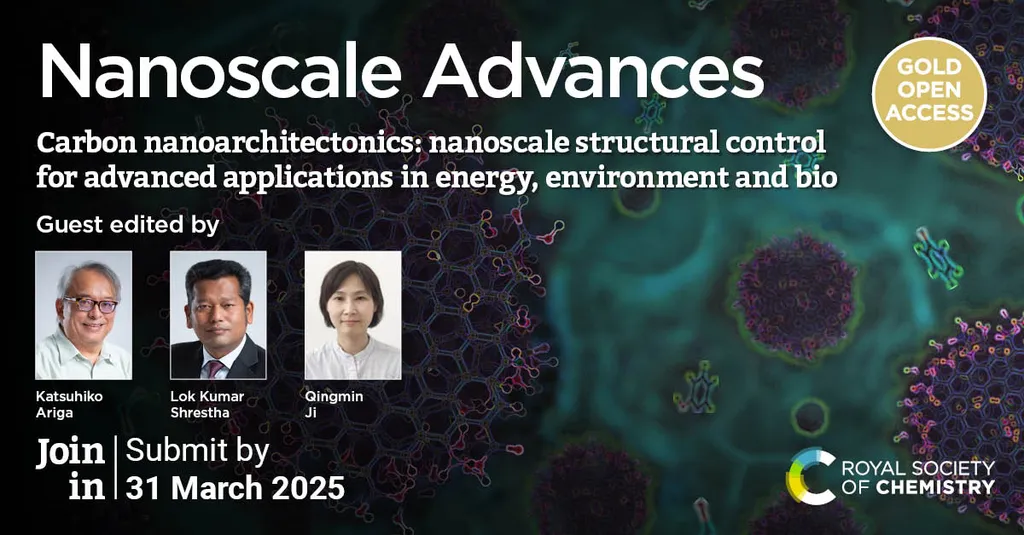In the world of materials science, few names carry as much weight as Dr. Katsuhiko Ariga. As the renowned researcher turns 60, his contributions to the field, particularly in nanotechnology and the emerging discipline of nanoarchitectonics, are being celebrated in a special issue of *Science and Technology of Advanced Materials* (STAM), known in Japanese as *Zairyo to Kankyo* (Materials and Environment). The issue, guest-edited by Masanobu Naito of the National Institute for Materials Science (NIMS) in Ibaraki, Japan, highlights Ariga’s groundbreaking work and its potential to revolutionize industries, including energy.
Dr. Ariga’s career has been marked by a relentless pursuit of innovation at the nanoscale. His work in nanoarchitectonics—an interdisciplinary field that combines nanotechnology, materials science, and molecular engineering—has opened new avenues for designing materials with unprecedented properties. These advancements could have profound implications for energy storage, catalysis, and sustainable materials, among other applications.
Naito, lead author of the special issue and a colleague of Ariga’s at NIMS, emphasizes the transformative potential of these discoveries. “Dr. Ariga’s research has consistently pushed the boundaries of what is possible in nanotechnology,” Naito says. “His work in nanoarchitectonics is not just about creating smaller materials; it’s about engineering them to perform functions that were previously unimaginable.”
One of the most promising areas of Ariga’s research is in energy storage. By manipulating materials at the nanoscale, scientists can enhance the performance of batteries, supercapacitors, and fuel cells, making them more efficient and longer-lasting. This could be a game-changer for the renewable energy sector, where reliable and high-capacity energy storage solutions are crucial for integrating intermittent sources like solar and wind power into the grid.
Beyond energy, Ariga’s work in nanoarchitectonics could also lead to breakthroughs in environmental remediation, biomedical applications, and advanced manufacturing. For instance, nanomaterials designed with precise architectures could be used to capture pollutants from water or air, or to deliver targeted drug therapies with greater precision.
As the energy sector continues to evolve, the demand for innovative materials that can meet the challenges of sustainability and efficiency will only grow. Ariga’s contributions provide a foundation for future research, inspiring a new generation of scientists to explore the possibilities of nanoarchitectonics.
The special issue in *Science and Technology of Advanced Materials* serves as both a tribute to Dr. Ariga’s legacy and a roadmap for the future of materials science. As Naito notes, “This is just the beginning. The principles of nanoarchitectonics will continue to shape the way we think about and interact with materials, paving the way for technologies that we can only begin to imagine today.”
For professionals in the energy sector and beyond, Ariga’s work offers a glimpse into a future where materials are not just passive components but active participants in solving some of the world’s most pressing challenges. As we celebrate his 60th birthday, it’s clear that his influence will be felt for decades to come.

